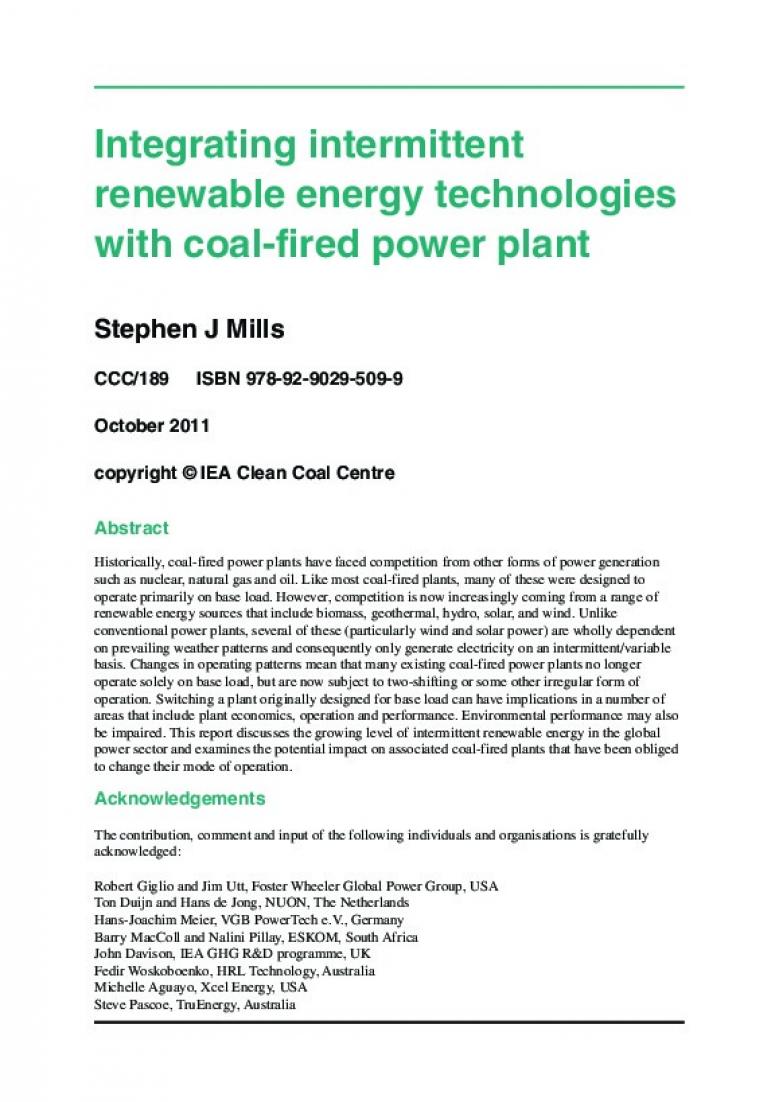CCC/189 ISBN 978-92-9029-509-9
October 2011
copyright © IEA Clean Coal Centre
Abstract
Historically, coal-fired power plants have faced competition from other forms of power generation
such as nuclear, natural gas and oil. Like most coal-fired plants, many of these were designed to
operate primarily on base load. However, competition is now increasingly coming from a range of
renewable energy sources that include biomass, geothermal, hydro, solar, and wind. Unlike
conventional power plants, several of these (particularly wind and solar power) are wholly dependent
on prevailing weather patterns and consequently only generate electricity on an intermittent/variable
basis. Changes in operating patterns mean that many existing coal-fired power plants no longer
operate solely on base load, but are now subject to two-shifting or some other irregular form of
operation. Switching a plant originally designed for base load can have implications in a number of
areas that include plant economics, operation and performance. Environmental performance may also
be impaired. This report discusses the growing level of intermittent renewable energy in the global
power sector and examines the potential impact on associated coal-fired plants that have been obliged
to change their mode of operation.


